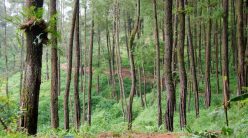braw.org
Gary Gaard, BRAW Board of Directors
I’ve had a bluebird trail at Deer Valley Golf Course for several years. I monitor ten flyGuard houses on the course. Cavity nesters at this golf course have been victim of the black fly.*
When I first placed bluebird houses on this golf course, 50% of nests were bluebirds and 50% were tree swallows.** If a location had a bluebird nest, I would leave the house at that location. Some locations have had double bluebird nests for multiple years. If a nest box had a tree swallow nest, I would move the house to a location that I hoped would be more attractive to the bluebird.
The summer of 2004 there were zero nesting attempts by tree swallows. Ten nest boxes (100%) did have nesting attempts by bluebirds.
I think there are two key factors to the bluebird nesting success at Deer Valley. All nest box placements have nearby shrubs/trees where the bluebird perches and watches the nest box. The bluebird is not the passive bird they are often portrayed; rather they will aggressively defend their nest by attacking other birds that approach the nest box. Some bluebird pairs even defend the nest by divebombing encroaching humans. Second, all houses are now in areas where hillsides have remnant prairie plants (DNR prairie plant experts monitor prairie plant populations several times during the growing season). The bluebirds are often observed hunting for insects in this remnant prairie, and I suspect abundant food supply is key to nesting success.
* Gaard, Gary. When the Buffalo Gnat Hordes Hit Mt. Horeb, Wisconsin Bluebird, fall 2004, Vol. 19 page 11.
** Gaard, Gary. Eliminating Black Fly Feeding on Nestling Bluebirds, Wisconsin Bluebird, summer 2003, Vol. 18 page 1.





